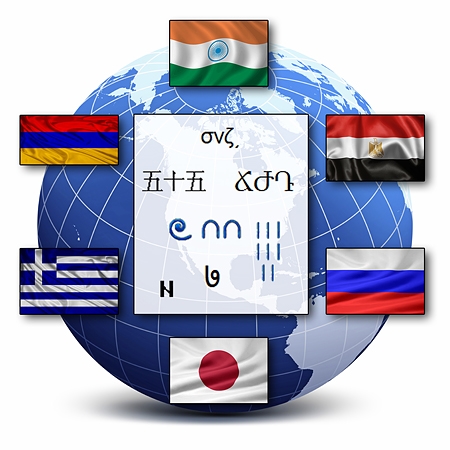The cache is NOT at the posted coordinates
About This Series
This Calgary Puzzle Solving 101 Series (CPS101) is based on the original Puzzle Solving 101 Series by ePeterso2.
The first 12 caches in this series help you build your puzzle-solving skills. Each contains a lesson focusing on a specific skill, examples of how to use that skill, an actual puzzle to test that skill, and a cache to find as a reward. Study the lesson, solve the puzzle, and you'll have the location of a cache.
When you enter correct coordinates into the geochecker, a piece of information will be revealed that is required for the final exam (the 13th cache in the series).
Lesson 03: Translation
Translation is transferring information to another language so the receiver will get the same message as that being sent but in way that they can understand. When we go on vacation in foreign countries it doesn't take long before we learn to order our favourite foods and beverages and are able to exchange at least a few pleasantries with the locals in their own language. Let's review a few types of translations that may be required to solve puzzles.
Foreign Languages
Puzzles sometimes require you to translate from other languages or a snippet of a foreign language can be a hint to point you in the right direction. Two popular language translation sites are Google Translate and Babel Fish.
Foreign Number Systems
Numbers in both symbol and written form can be translated into other languages. Often the trick is to figure out which language(s) is being used. Examine the cache page carefully for clues as to which language is required. Wikipedia has a helpful page on Numeral Systems with links on the right hand side to additional numeral systems by culture.
Binary, Octal and Hexadecimal Numbers
Numbers can be in bases other than the base 10 with which we are most familiar. See Lesson 10: Mathematics for a more detailed discussion of number bases. Here is a list of some popular numbers conversion sites:
Base64
Base64 is a special kind of translation that is mainly used to transfer images and other binary files through text messages. Normal text encoding can only accommodate 127 different characters. A binary file can contain up to 256 different characters. To fit one into the other, the bits that make up the binary file are redistributed over the text characters. A good and thorough description of this technique is given on Wikipedia. Usually you don't have to know how the translation is actually done, you only have to know how to recognize an encoding of this type and where to get the tools to do the decoding. Base64 encoded text is usually recognizable by the seemingly random use of UPPERCASE and lowercase characters as well as numbers 0 to 9. Usually (but not always) the text ends with one or two '=' characters. Whenever you think something is encoded this way (such as ' VGhpcyBpcyBzb21lIGJhc2U2NCBlbmNvZGVkIHRleHQNCg=='), use the available online tools to do the conversion.
ASCII Characters
The text that you see on this page consists of characters from the ASCII table. This table consists of 127 different characters that include all characters and numbers, punctuation and some special characters. The table specifies how a number can be interpreted as a character. For instance, if the computer reads a byte from a file it holds a value. If the value is 123, the computer knows to print the character '{'. But there are other standards to convert a number into a character. One of these standards is the EBCDIC table. This table has a different layout so the same value 123 is mapped to the character '#'. The EBCDIC table can be recognized by the fact that the normal characters (a-z) are mapped to a number larger than 127, where in the ASCII table they are less than 127. For this translation there are also online tools that help in the conversion.
Practice Puzzles
Puzzle 03: Where in the World Am I?

